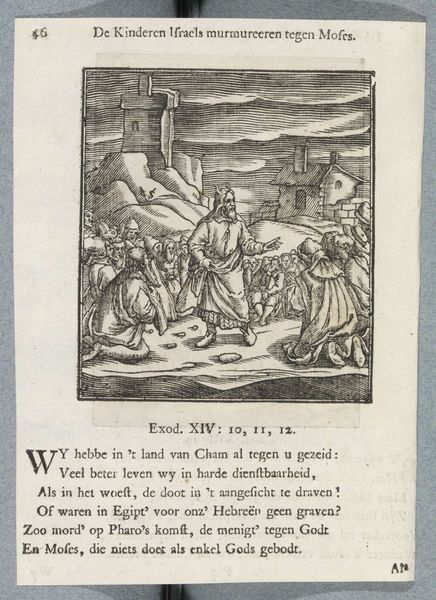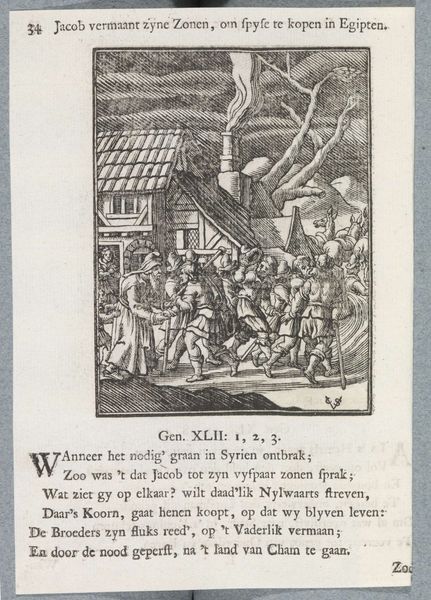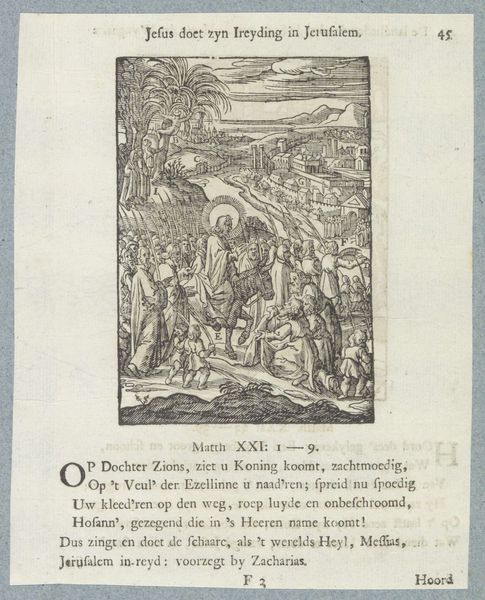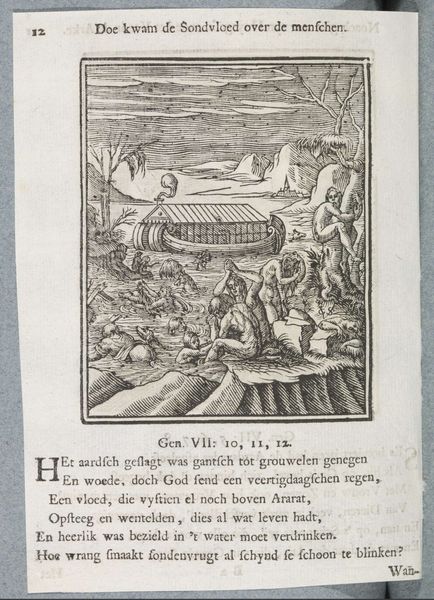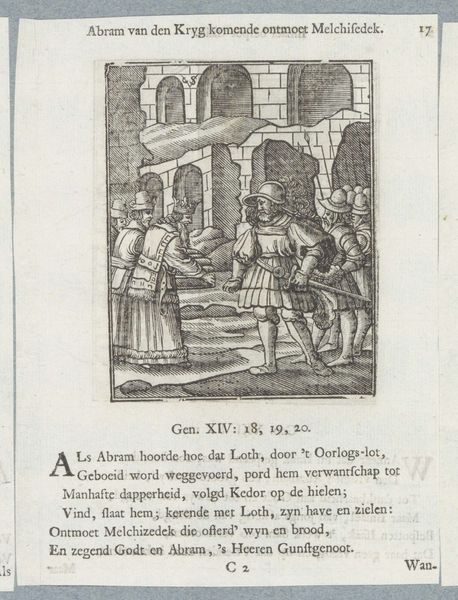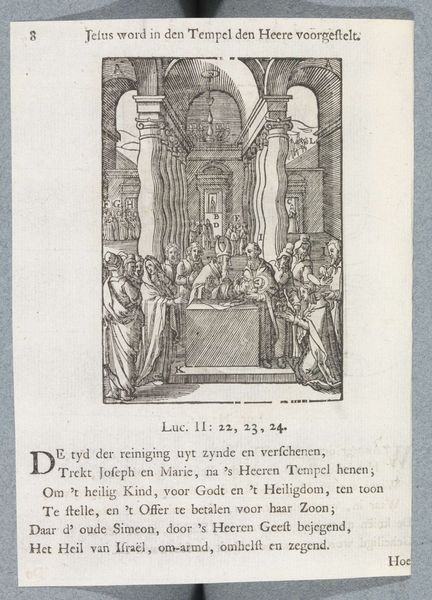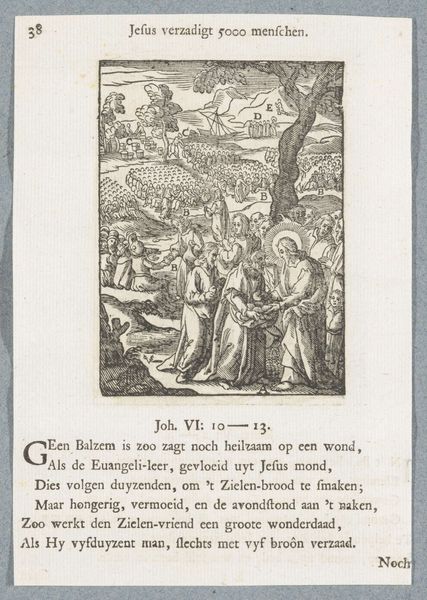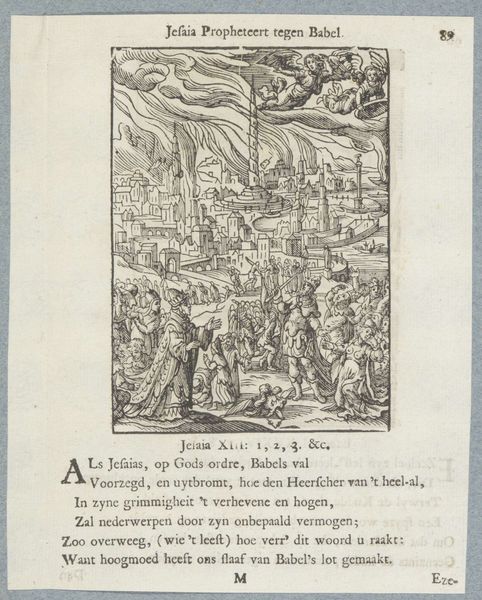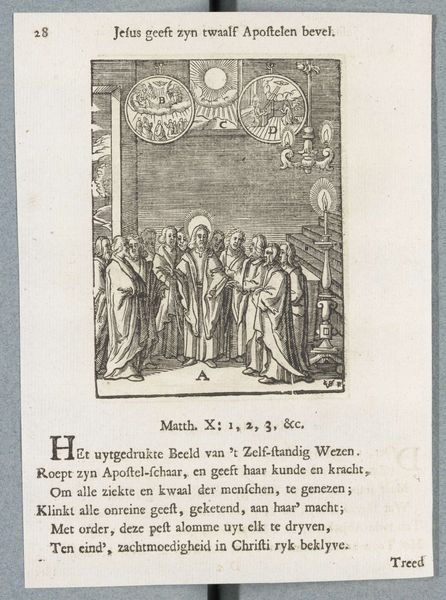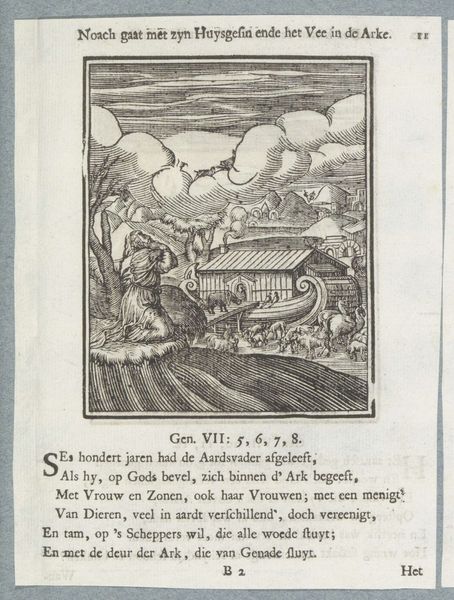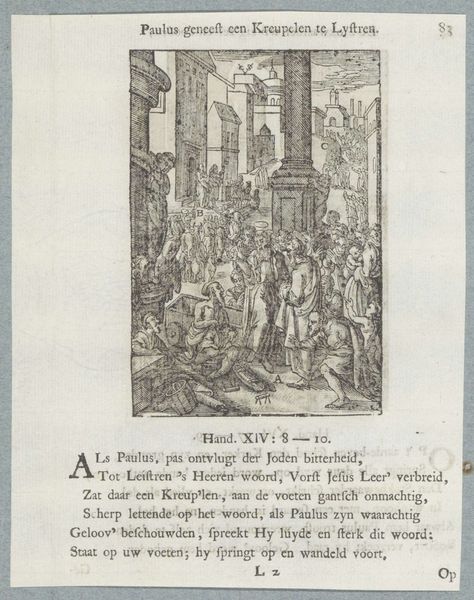
drawing, print, engraving
#
drawing
#
narrative-art
#
dutch-golden-age
# print
#
figuration
#
line
#
history-painting
#
engraving
Dimensions: height 106 mm, width 84 mm, height 167 mm, width 136 mm
Copyright: Rijks Museum: Open Domain
This print, ‘Val van Jericho’, or ‘Fall of Jericho’, was made by Christoffel van Sichem II, likely in the early 1600s, using woodcut. The material, wood, has a direct impact on the aesthetic. The graphic nature of woodcut, with its strong contrast between black and white, lends itself to bold storytelling. Look at how the artist uses thick lines to define forms, a direct consequence of the carving process. Woodcut is a relief printing technique, where the image is carved into a block of wood, and the raised areas take the ink. This process requires physical labor, a stark contrast to the divine event it depicts. The technique was widely used for both religious and secular subjects, making art accessible to a wider audience through mass production. Consider the labor involved in producing multiple copies of this print, and how that labor connects to wider issues of accessibility and consumption in the early modern period. By considering the material and the making, we can understand its cultural significance, and challenge traditional distinctions between fine art and craft.
Comments
No comments
Be the first to comment and join the conversation on the ultimate creative platform.
